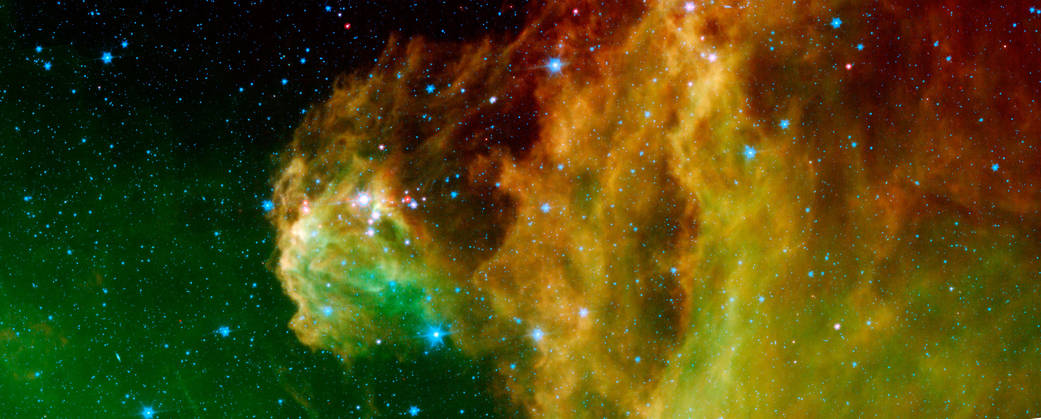
This image from NASA’s Spitzer Space Telescope shows infant stars “hatching” in the head of the hunter constellation, Orion. Astronomers suspect that shockwaves from a supernova explosion in Orion’s head nearly three million years ago may have initiated this newfound birth.
The region featured in this Spitzer image is called Barnard 30, located approximately 1,300 light-years away and sits on the right side of Orion’s “head,” just north of the massive star Lambda Orionis.
Wisps of green in the cloud are organic molecules called polycyclic aromatic hydrocarbons. These molecules are formed any time carbon-based materials are burned incompletely. On Earth, they can be found in the sooty exhaust from automobile and airplane engines. They also coat the grills where charcoal-broiled meats are cooked.
Tints of orange-red in the cloud are dust particles warmed by the newly forming stars. The reddish-pink dots at the top of the cloud are very young stars embedded in a cocoon of cosmic gas and dust. Blue spots throughout the image are background Milky Way along this line of sight.Image credit: NASA/JPL-Caltech/ Laboratorio de Astrofísica Espacial y Física Fundamental

























